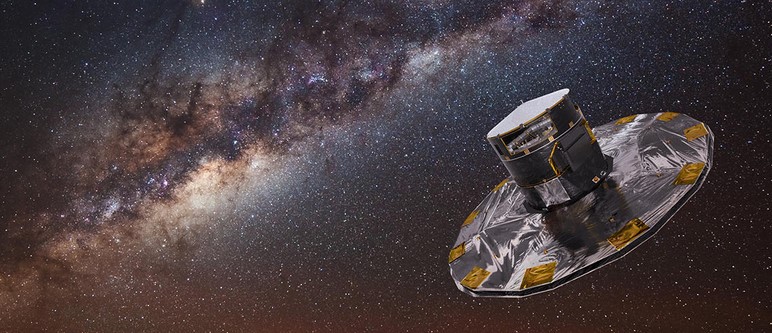
Astronomers worldwide are thrilled by new evidence that was announced from the Gaia Space Observatory. Located in our orbit, Gaia’s Operators established a new series of stars that didn’t originate from the Milky Way Galaxy. This is the 1st time that stars merging with our galaxy has been seen by astronomers, prompting the excitement.
Under the political climate seen worldwide, this announcement has widely gone unnoticed by supporters of the scientific community. It’s surprising considering that this star cluster extends 6000 Light-Years, reaching above & below the planes of our Milky Way Galaxy. Looking from our galaxy to the side, it’d somewhat resemble a spinning disc with a curved line towards the left-hand side. Their positioning won’t remain permanent with evidence showing their moving closer towards the centre of our galaxy. That’s inevitable when remembering the Milky Way has a black hole in its centre. Over billions of years, this cluster of stars will be pushed closer towards the depths of our galaxies blackhole.
Gaia Space Observatory named this star cluster after the Greek Goddess of the Night, Nyx. It’s known that these stars our within the radiation zone of our sun, meaning their trajectory is positioned for our solar system. Six thousand years from 2020 there could be 250+ stars seen outside our planet. It should be mentioned that Astronomers clarify newly found collections of worlds as star clusters. That means 8020 will see 250+ new planets surrounding our solar system.
Dwarf Galaxies & The Uninhabitable Zone
Nyx was a former “Dwarf Galaxy”, which typically harbour the necessary components to sustain some variation of life. It’s harder to forms of matter to connect in wider galaxies like our own, prompting the rarity of planets harbouring water & standard elements used in evolution. The exact opposite could be seen with the Nyx Dwarf Galaxy, which would’ve merged with the Milky Way after billions of years traversing the “Uninhabitable Zone”.
The Uninhabitable Zone is considered the area separating large-scale galaxies, such as the Milky Way & Andromeda. Largescale galaxies travel as excessively low rates of speeds, taking billions of years to connect. Andromeda is our sister galaxy & closed to the milky way, with the two destined to merge into one 4.5 Billion Years from 2020.

